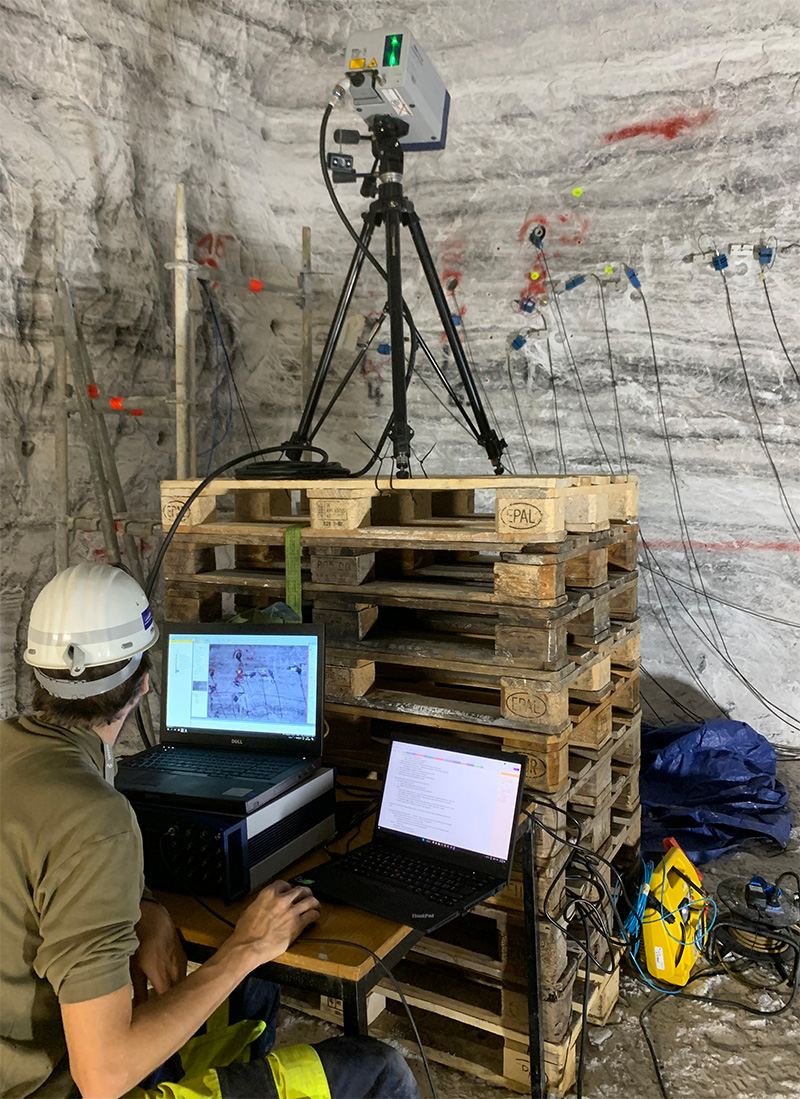2023-02-14
Sensor calibration in a salt mine

A group of scientists of the BedrettoLab team recently conducted experiments in the Merkers salt mine in Germany with the aim of calibrating a variety of seismic sensors. Calibration of these sensors is required to infer quantitative physical measurements from the recorded ground motions originating from seismic activity at the BedrettoLab. The sensors will later be installed in boreholes for the FEAR project aiming to measure small magnitude earthquakes, so-called “pico-seismicity”, that range between magnitudes of Mw -6 to -2. Special about these small magnitude earthquakes is that they are usually not felt by humans and that they radiate high-frequency energy (i.e., 1 – 100 kHz), a frequency bandwidth that was targeted with the recent experiments. The results gained are allowing us to calibrate the installed sensors and physically quantify pico-seismic earthquakes.
The saltmine offered an ideal setting for in-situ calibration of these sensors as the salt rock has a simple homogenous structure and low attenuation. In general sensor calibration requires an ideal setting meaning that the measurements of specific physical values should work without disturbances. In granite, like the one in the BedrettoLab, the velocity of the waves travelling through the rock volume is disturbed due to fractures and faults which makes calibration very difficult.
For the calibration experiments a variety of sensors were installed around a salt pillar measuring approximately 40 m by 40 m. Different artificial sources were deployed, most informative being a steel ball pendulum were used to initiate seismic waves in the pillar. The recorded seismic waves at a sensor were then compared to a reference laser sensor as well as models that predict the seismic wave field, ultimately leading to the calibration.
The salt mine experiment (SaMiEx) benefited from multiple partners, most notably Gesellschaft für Materialprüfung und Geophysik (GMuG) and the German Research Centre for Geosciences (GFZ) but also the Institute of Mine Seismology (IMS), Kistler Instruments AG and Elsys Instruments AG.

